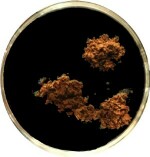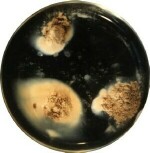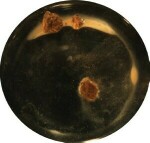Aggregate Slaking and Clay Dispersion
S.C. Boucher
School of Geography and Environmental Science
Monash University, Victoria 3800
Introduction
The structural stability of soil aggregates upon wetting has been the subject of a great deal of research around the world. The combination of slaking and dispersion caused a reduction in macroporosity and, therefore, lower infiltration rates and hydraulic conductivities as well as an increase in soil strength and other undesirable soil physical properties (Rengasamy et al., 1984a). The assessment of the behaviour of Australian soils was studied over 60 years ago (Downes and Leeper, 1940) and, in the 1960s, Emerson (1967) published the details of a test which has since been widely adopted. A symposium on the topic `Advances in Soil Structure' was held in Shepparton from 28-30 October 1991 (Rengasamy, 1991) and some of the proceedings were published in the Australian Journal of Soil Research 29, 6 (1991).
Slaking and Dispersion
In the Emerson test (1967; Loveday and Pyle, 1973; Australian Standard, 1980) several small air-dry soil aggregates were immersed in a beaker of distilled water in order to characterize their stability. Two main types of structural disruption were observed. `Slaking' (e.g. Yoder, 1936) is a term used to describe the initial fragmentation of soil aggregates several millimetres in diameter which may disintegrate further to become microaggregates [i.e. < 250 ým diameter (e.g. Tisdall, 1991; Oades and Waters, 1991)]. A more important role for slaking in this test was later proposed by Emerson (1991). Briefly, the stresses created upon rapid wetting were caused by entrapped air and differential swelling of clay particles (Emerson, 1977; 1991). Emerson (1964) noted that swelling affected slaking and, therefore, the latter process may be influenced by soil sodicity (Churchman et al., 1993). Aggregate slaking has also been found to be influenced by the initial water content of the soil and associated heat of wetting (Collis-George and Lal, 1971), organic matter concentration and clay mineralogy (Mullins, 2000).
 Complete aggregate slaking but no dispersion Photograph: Stuart Boucher |
 Aggregate slaking and clay dispersion Photograph: Stuart Boucher |  Clay dispersion but no slaking Photograph: Stuart Boucher |
An attempt to simulate the shearing forces associated with rainfall impact and tillage on bare soil was made by remoulding a sample of the soil material which had been brought to a water content equivalent to field capacity. Aggregates were formed artificially and then subjected to further testing in order to assess their dispersibility (Emerson, 1991). The term `mechanical dispersion' was used by Rengasamy et al. (1984b) to the describe clay particles released following the shaking of a 1:5 soil:water suspension, also with the intention of simulating the forces imparted by rainsplash or intensive cultivation.
References
Australian Standard, 1980: Determination of Emerson class number of a soil. In `Methods of testing soils for engineering purposes. Part C - soil classification tests'. Standards Association of Australia No. AS 1289.C8.1-1980.
Churchman, G.J., Skjemstad, J.O. and Oades, J.M., 1993: Influence of clay minerals and organic matter on effects of sodicity on soils. Australian Journal of Soil Research 31, 779-800.
Collis-George, N. and Lal, R. 1971: Infiltration and structural changes as influenced by initial moisture content. Australian Journal of Soil Research 9, 107-116.
Downes, R.G. and Leeper, G.W., 1940: The measurement of soil structure. Proceedings of the Royal Society of Victoria 52, 1-20.
Emerson, W.W., 1964: The slaking of soil crumbs as influenced by clay mineral composition. Australian Journal of Soil Research 2, 211-217.
Emerson, W.W., 1967: A classification of soil aggregates based on their coherence in water. Australian Journal of Soil Research 5, 47-57.
Emerson, W.W., 1977: Physical properties and structure. In Russell, J.S. and Greacen, E.L. (eds) `Soil factors in crop production in a semi-arid environment'. University of Queensland Press, St. Lucia, 78-104.
Emerson, W.W., 1991: Structural decline of soils, assessment and prevention. Australian Journal of Soil Research 29, 905-921.
Loveday, J. and Pyle, J., 1973: The Emerson dispersion test and its relationship to hydraulic conductivity. CSIRO Australia, Division of Soils Technical Paper No. 15.
Mullins, C.E., 2000: Hardsetting soils. In Sumner, M.E. (ed. in chief). `Handbook of Soil Science'. CRC Press, Boca Raton, pp. G70-87.
Murphy, B., 1995: Relationship between the Emerson aggregate test and exchangeable sodium percentage in some subsoils from central west New South Wales. In Naidu, R., Sumner, M.E. and Rengasamy, P. (eds) `Australian Sodic Soils - Distribution, Properties and Management'. CSIRO Australia, East Melbourne, 101-105.
Oades, J.M. and Waters, A.G. 1991: Aggregate hierarchy in soils. Australian Journal of Soil Research 29, 815-828.
Rengasamy, P., 1991: Advances in soil structure: an introduction. Australian Journal of Soil Research 29, 697-698.
Rengasamy, P., Greene, R.S.B. and Ford, G.W. 1984a: The role of clay fraction in the particle arrangement and stability of soil aggregates - a review. Clay Research 3, 53-67.
Rengasamy, P., Greene, R.S.B., Ford, G.W. and Mehanni, A.H., 1984b: Identification of dispersive behaviour and the management of Red-brown Earths. Australian Journal of Soil Research 22, 413-431.
Tisdall, J.M. 1991: Fungal hyphae and structural stability of soil. Australian Journal of Soil Research 29, 729-743.
Tisdall, J.M. and Oades, J.M., 1982: Organic matter and water-stable aggregates in soils. Journal of Soil Science 33, 141-163.
Yoder, R.E., 1936: A direct method of aggregate analysis of soils and a study of the physical nature of erosion losses. Journal of the American Society of Agronomy 28, 337-351.


